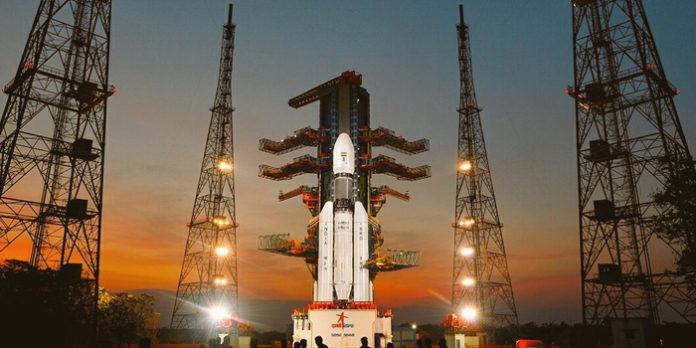Today Indian Space Research Organization (ISRO) successfully launched a monster rocket; GSLV Mk III nicknamed ‘Fatboy’. It has been launched by firing a high-thrust cryogenic engine in the first developmental flight and placed the country’s heaviest satellite in orbit.
As the countdown progressed at the Sriharikota Space Research Centre, ISRO, for the launch of India’s biggest rocket, more than hundred scientists and engineers had reason to be nervous. Till now, it has been observed that India’s most first launches of rockets have ended in failure.
But the Geosynchronous Satellite Launch Vehicle (GSLV) Mk-3 had a perfect lift-off, allaying concerns of the organization about its monster home-grown rocket. The 650-tonne rocket weighs as much as two-hundred full-grown elephants or five Jumbo jets. And scientists of the organization are expecting that one day, perhaps within 10 years, it will carry astronauts to space.
The monster GSLV Mk-III-D1 carried payloads of up to 4 ton into the Geosynchronous Transfer Orbit and 10 ton into the Low Earth Orbit (LEO). This monster was developed for fifteen years at a cost of around Rs 300 crore. This rocket was a 3-stage vehicle with indigenous upper stage engine designed to carry heavier and bigger communication satellites into the Geosynchronous Transfer Orbit. The GSLV Mk-3, which was earlier known as Launch Vehicle Mark-3 or LMV Mark 3, can be India’s first vehicle to ferry people into space.
The rocket’s specially designed cryogenic engine was developed by space scientists indigenously. It will help our country to get a greater share of the billion dollars global space market and also it will reduce the dependency on international launching vehicles GSAT-19, which has been powered for the first time with Lithium-ion batteries. These batteries have been made to increase self-reliance quotient. After that similar battery can be used to power electric cars and buses. Obviously, all these are the special features of the ‘Fatboy’.
Indian Space Research Organization (ISRO) has a dark record when it comes to the launching of the rocket. In 1979, the launching of the Satellite SLV-3 ended in failure. In 1993 the Polar Satellite PSLV ended in the sea. In 2001, the launch of the Geosynchronous Satellite Launch Vehicle GSLV also ended in failure.
Out of the eleven times, it had been launched earlier, only five launching had been successful till date. The remaining had ended up in the sea. Because of the repeated failures, the Geosynchronous Satellite Launch Vehicle (GSLV) was named the “Naughty boy”. A few scientists had even disparagingly interpreted the abbreviation of GSLV as a “Generally Sea Loving Vehicle”. The Polar Satellite Launch Vehicle PSLV has had thirty-nine successful launches.
But Indian Space Research Organization (ISRO) has learned from its mistakes. Till now, our country could launch only smaller satellites. For the launch of heavier satellites like the 3,130 kg GSAT-19 the GSLV carried today, it had to approach other countries. The central govt. has been promoting the home-grown space program to demonstrate the low-cost technology.




